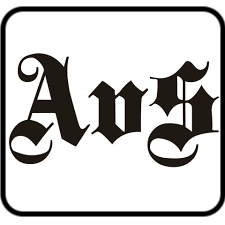The eye of the valley - Raphael Faux
15.08.2025 Gstaad LivingRaphael Faux on legacy, light, and the luxury of looking closer
The road to Raphael Faux’s home winds steeply above Rougemont, cutting into the forested slope with a slow, solemn grace. There’s something about the narrow curves and filtered light that feels cinematic, mysterious, even a little daunting. Before our interview, this matched my perception of Raphael: precise, elusive, someone you know mostly through his work. But as I parked and stepped into his lush, green garden, with its wide-open view of the mountains, I caught my first glimpse of the man behind the camera: generous, reflective, and more open than I’d expected.
We talked with ease. About photo technique, but also about timing, light, instinct, luck, and the many unseen hours behind every “instant.” Best known for his photographs of the Menuhin Festival and cultural life in Gstaad, Faux describes his process as a kind of quiet choreography: slipping into a church with limited access, placing cameras in unusual angles, or waiting in silence for the one perfect frame. “I like it when it’s challenging,” he says, smiling. “When it’s too easy, there’s no atmosphere.”
That drive to create something, rather than simply document, is what defines his work. He didn’t go the traditional art school route. Instead, he earned his stripes as a runner in Paris fashion studios, fetching croissants, setting up lights, and watching closely from the sidelines. While working in the Magnum archive, he absorbed the craft of Cartier-Bresson and others, one contact sheet at a time. “That was my education,” he says.“You’d read the captions on the back, study the contact sheets… and you’d see the whole story behind a single shot.”
Photography may look glamorous from the outside, but he speaks honestly about the short seasons, the late nights, and the invisible labour that follows every event. “People think it’s just pressing a button,” he says, “but the real work starts after midnight.” What keeps him going, especially now, is the shift toward fine art photography, a return to slow images, analogue inspiration, and trees captured in perfect light. “One picture can take a week,” he says. “Or more. But when the conditions are right, and you get it, you feel it.”
Raphael has recently traded his central studio for an old house just off the walking path behind the Gstaad stables. He’s fixing it up by hand, turning it into a working atelier. “I prefer to be hidden,” he says. “I spent too much time decorating the street. This one’s for me.”
Faux is not one to seek spectacle. His images favour subtlety, even in grandeur. Perhaps that’s what grants them such staying power; each frame acts as a quiet invitation to look again. And in a place as photographed as Gstaad, that’s no small feat. Whether seen on a concert poster, in a newspaper, or framed on a living room wall, his photos suggest that the familiar remains ever incomplete.
JEANETTE WICHMANN
Visit Raphael in his new studio on Mettlenstrasse 47 in Gstaad or www.gstaadphotography.com







